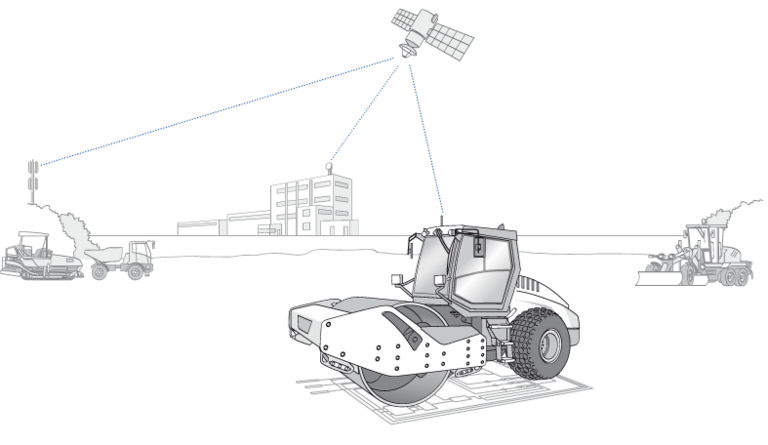Remote diagnosis module for road construction rollers
HAMM AGFor more than 100 years, HAMM AG has been manufacturing high-quality rollers and compactors for soil and asphalt compaction. In order to further extend their functionality, HAMM wanted to equip the machines with the possibility of field diagnosis for product development. Now, for the determination of load collectives and for the monitoring of prototypes, the relevant data can be continuously collected and transmitted in a freely configurable manner.

In order to realize this, an additional ruggedized computer was integrated, which records operating events via the CAN bus, filters them suitably and processes them with GPS data. It then sends the data as a status email via a GSM data connection either regularly or on demand. This computer is equipped with a minimal Linux system, which contains a busybox and the necessary libraries in order to be able to communicate with the peripheral devices GSM modem and GPS, and the CAN bus.
It was emlix's task to design and implement the remote diagnosis application. It was also necessary to find a suitable way to install this application and its dependencies onto the device in a production-friendly manner.
Firstly, it had to be ensured that all the relevant CAN messages in the predetermined configuration would be collected and stored in a suitable way. The same applied to the NMEA data from the GPS module. Here, the aim was to record machine movements at the time intervals given in the configuration. These recordings are collected and stored to be called up later. The GPS module is also used for the synchronization of the system time.
The most difficult challenge in the design was the definition of the filter logic. In this context, emlix worked closely with HAMM in many stages in order to realize the filtering itself, the correct reaction to certain triggers, the cyclical data aggregation as well as the recording of CAN error messages. It became clear that the questions to be answered in the future could not be fully anticipated. Therefore, a realization strategy was selected that will make it possible for HAMM to adapt the filters to new requirements when necessary.
Finally, a concept was agreed for the installation of the software and the necessary application protocols for sending E-mails on the ruggedized computer.